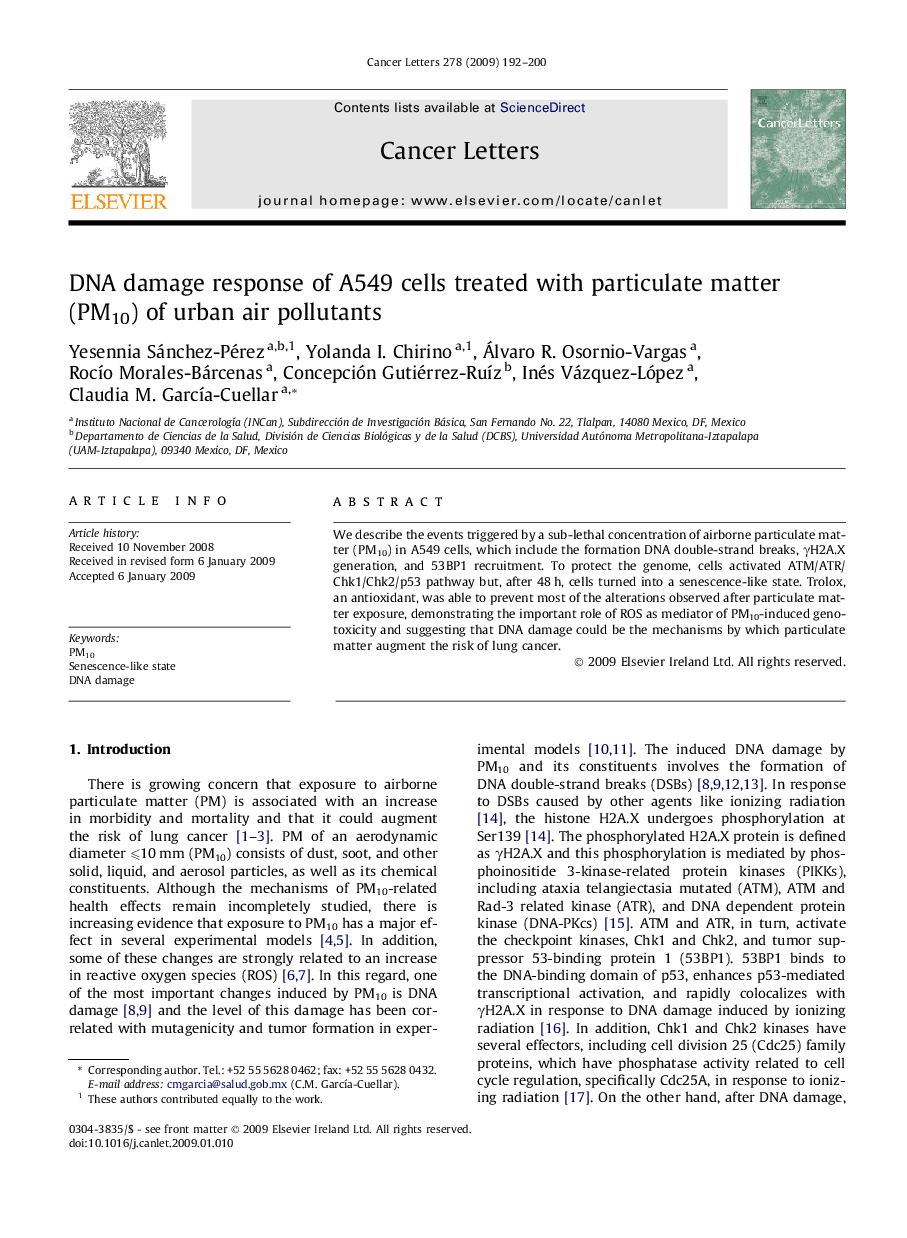| Article ID | Journal | Published Year | Pages | File Type |
|---|---|---|---|---|
| 2114427 | Cancer Letters | 2009 | 9 Pages |
Abstract
We describe the events triggered by a sub-lethal concentration of airborne particulate matter (PM10) in A549 cells, which include the formation DNA double-strand breaks, γH2A.X generation, and 53BP1 recruitment. To protect the genome, cells activated ATM/ATR/Chk1/Chk2/p53 pathway but, after 48 h, cells turned into a senescence-like state. Trolox, an antioxidant, was able to prevent most of the alterations observed after particulate matter exposure, demonstrating the important role of ROS as mediator of PM10-induced genotoxicity and suggesting that DNA damage could be the mechanisms by which particulate matter augment the risk of lung cancer.
Keywords
Related Topics
Life Sciences
Biochemistry, Genetics and Molecular Biology
Cancer Research
Authors
Yesennia Sánchez-Pérez, Yolanda I. Chirino, Álvaro R. Osornio-Vargas, Rocío Morales-Bárcenas, Concepción Gutiérrez-Ruíz, Inés Vázquez-López, Claudia M. García-Cuellar,
